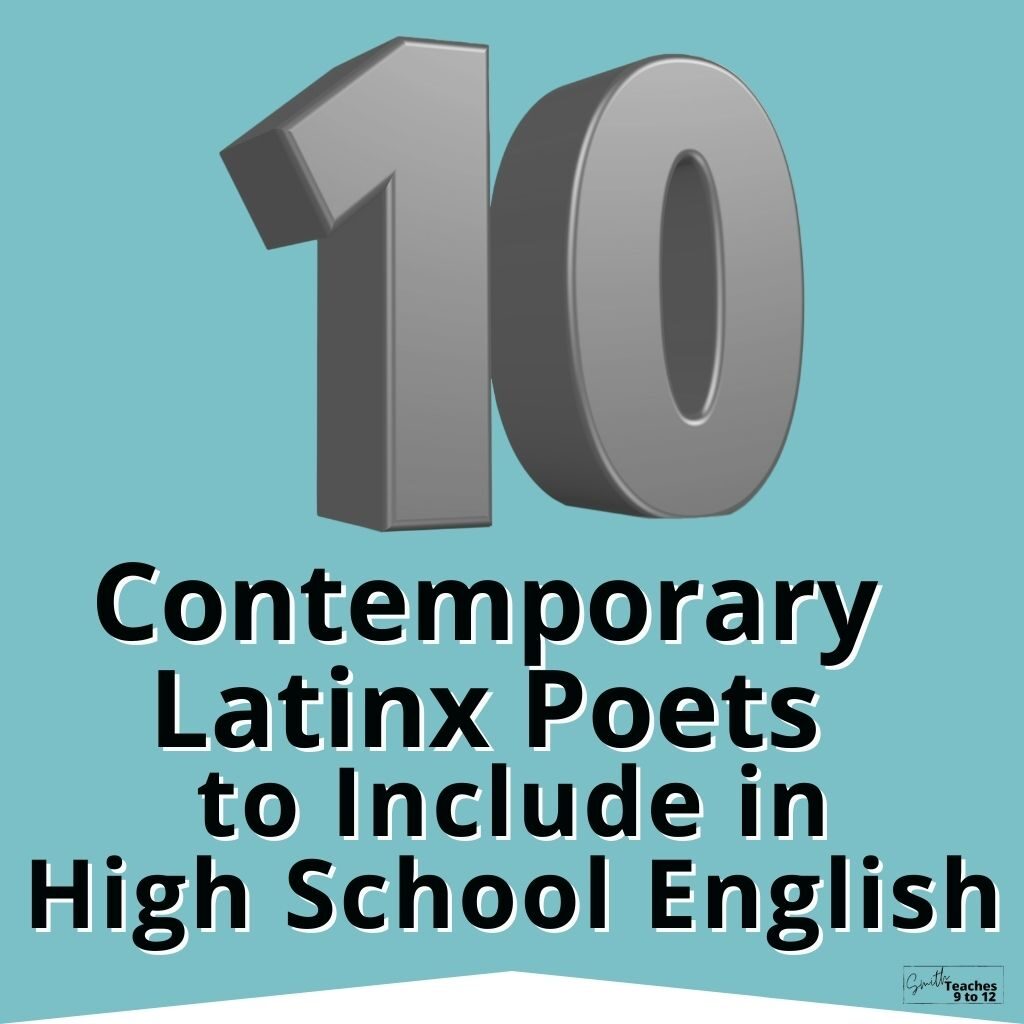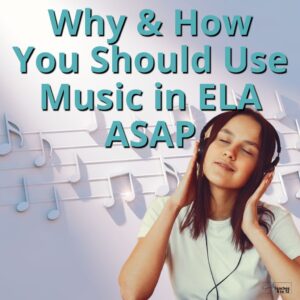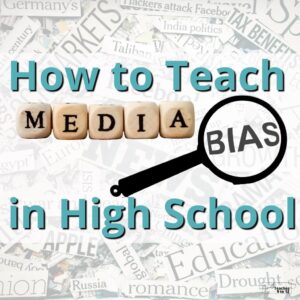Sharing is caring!
“Poetry! All. The. Time!” is what I say! With that in mind along with my ongoing goal to include poetry in every month of the year, I wanted to share 10 contemporary Latinx poets to include in your High School English lessons. And now is the perfect time with National Hispanic Heritage Month from mid-September to mid-October, but anytime (all the time!) is a good time to include these 10 contemporary Latinx poets.
These poems run the gamut from light and amusing to those focused on contemporary issues in our world, and some even do both in the same piece! Read on for 10 contemporary Latinx poets and some of their amazing poems with suggested activities and lessons for your high school English classroom this month or any month!

Ada Limón
I’m a big fan of Limón’s work so it’s hard to narrow the choices but here are three that could work in any number of ways in your high school English classroom. Side note, she’s also a great follow on Twitter!
“Instructions on Not Giving Up” is a sonnet that focuses on the changing of the seasons from winter to spring with such beautiful imagery emphasizing the colors that emerge from one season to the next. Students could analyze a classic sonnet and then compare it to this one. Here’s a ready-made lesson that focuses on a brief introduction to sonnets and then instructs students to write their own.
“Before” offers repetition, an interesting pace, and a memory of childhood with a resounding lesson learned at the end. I use this one as part of the introduction to coming of age novels in grade 9 but it could also work with a lesson or activity about memoirs.
Another is “A New National Anthem” from 2018, which could be controversial to some. It has been a great addition to a unit on persuasion and examining ethos, pathos, and logos, particularly for reviewing the language of the national anthems of both Canada and the United States. In recent years in Canada, a line in the anthem was updated and this caused a great deal of debate at the time, which is a perfect deep dive for students to examine in relation to this poem.
Finally, “Wife” makes for a great backdrop to a discussion of gender roles. You could pair this with the satirical essay she references: Why I Want A Wife by Judy Syfers Brady.

Yesenia Montilla
Montilla is an Afro-Latina poet from New York City. Two of her most recent poems are both beautiful and powerful and would make a strong addition to any classroom. First is from 2020, “a brief meditation on breath” is about recent events in our world through the lens of breathing: Covid-19 and police brutality and Eric Garner. Another is “Naming the Baby”, which reflects on Breonna Taylor and her future dreams.
I like to use poetry as a way to process and to expand on current events. First, it demonstrates to students that poetry remains relevant. With so much curriculum that focuses on classic poetry, including contemporary poetry, particularly poems about ‘today’ can make poetry more meaningful to students.
In a mid-year lesson I used “a brief meditation on breath” as a way to open up discussion for students. We were facing another shift to online learning and students were feeling frustrated and anxious, so this poem allowed them to see some of their feelings mirrored in the poem. We completed a short lesson where we did some media analysis of current events to identify parts of a news article, to analyze media bias, and then students chose a news article to inspire a poem they created.

Elizabeth Acevedo
You might know Acevedo from her novels in prose including Poet X (a personal favorite) and Clap When You Land. If you’re not able to adjust your curriculum to include these novels you can always rely on a wealth of poetry from her so I had to include her as one of these 10 contemporary Latinx poets. Two that I really like to use in class include “After He Decided to Leave” and “Ode to the Head Nod” since they each take a moment that is simple and build so much more out of it. It’s a nice way to have students create their own poem out of a low-key moment in their life.
“After He’s Decided to Leave” is a narrative poem about a bottle of hot sauce and the end of a relationship.
“Ode to the Head Nod” is another one of Acevedo’s poems where she seems to speak of something simple but it’s loaded with so much more.
If you’re looking to have students write their own poems then check out Acevedo’s presentation from April 2022 with a performance and advice for writing and performing poetry.

Carmen Giménez Smith
“Like an Auto-tune of Authentic Love” is about long distance love and romance in our current world of online connectivity. The narrator of the poem describes choosing and watching a movie together with a partner while on FaceTime.
This poem would work as an SEL activity to discuss connection and relationships. You could expand to discuss healthy relationships and how to define them. Pairing this poem with some non-fiction could further ground the discussion. Teen Vogue has an excellent selection of articles about relationships that would be suitable to high school students.
Check out a collaborative blog post I contributed to about the best non-fiction texts for teaching ELA.

Brenda Cárdenas
Nuestra Señora de las Iguanas is a poem with imagery about a woman in an outdoor shower encountering an iguana. The poem though is an homage and a reference to famous Mexican photographer Graciela Iturbide’s 1979 photo of a woman with iguanas on her head that is also called Nuestra Señora de las Iguanas. You can see the photograph through the Brooklyn Museum’s site.
An option here is to explore photography and have students use images to inspire their writing. Google’s Arts and Culture searchable database is an excellent, though can be overwhelming, starting point. You could check out the trending or popular articles and profiles to help narrow choices.
You can also check out the ready-made activity about Ekphrastic Poetry that you can print or assign digitally.
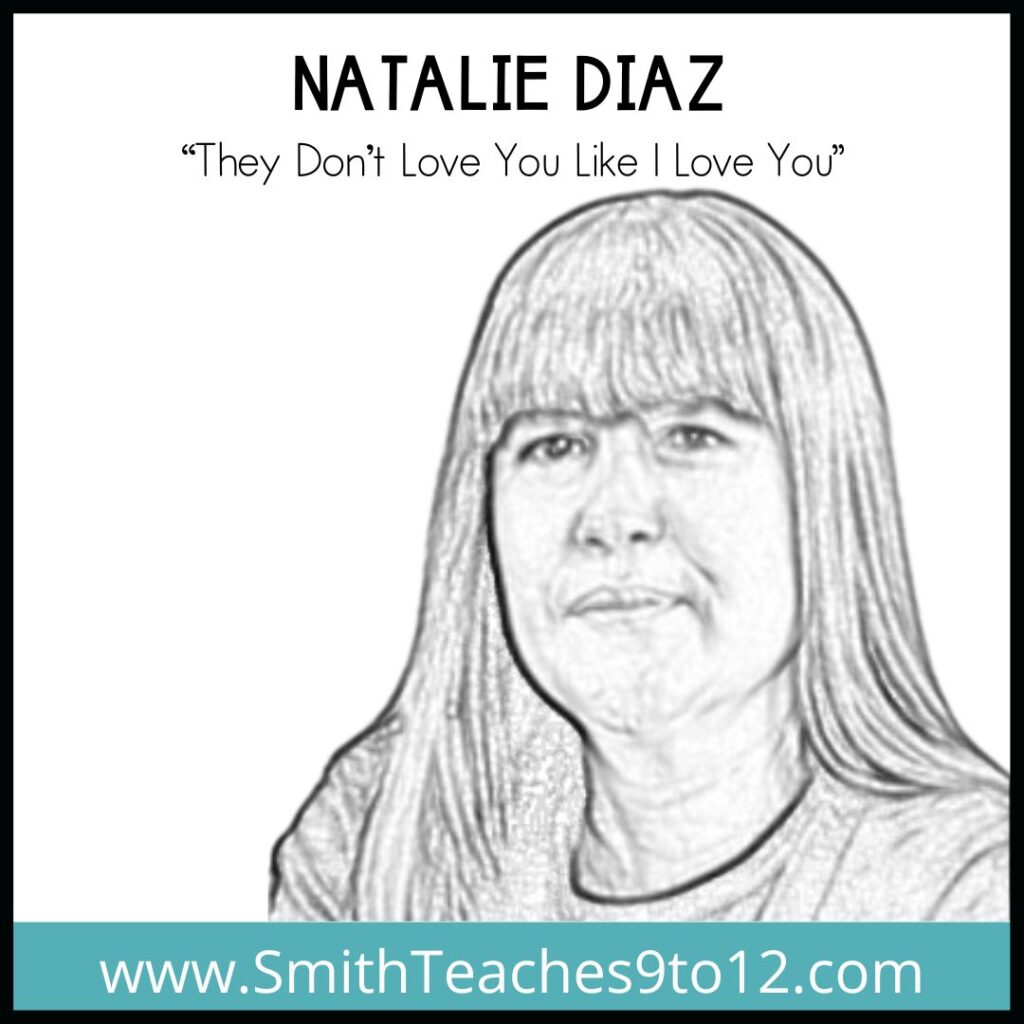
Natalie Diaz
“They Don’t Love You Like I Love You” is a wonderful poem about knowing your worth. This would be great to pair with the two songs mentioned in the poem: Maps by the Yeah Yeah Yeahs and Hold Up by Beyoncé (you may want to do some edits for language if printing lyrics)
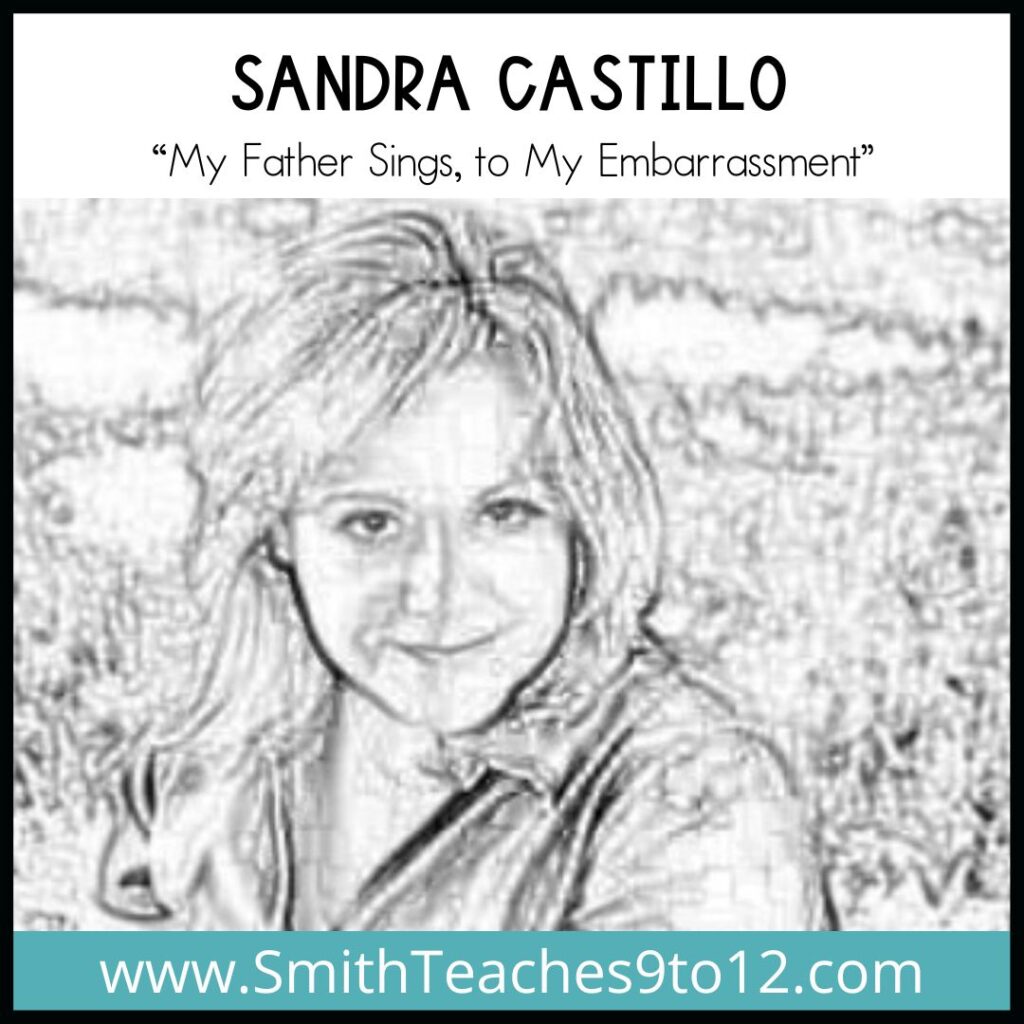
Sandra Castillo
“My Father Sings, to My Embarrassment” is both specific and universal in sharing an experience. The narrator speaks of her city – Miami – and her experience there but also about her father’s new path and her shame about it. This is the specific part of the poem; the universal is in the embarrassment she feels of a parent – haven’t we all?
(My dad painted his face like a ninja turtle when I was in grade 7 and everyone wanted to get our picture together; I avoided that like you wouldn’t believe. The only picture that remains is of him alone with his face done up in green and blue paint. Decades later it’s a memory and a photo that warms my heart and still makes me roll my eyes a little too!)
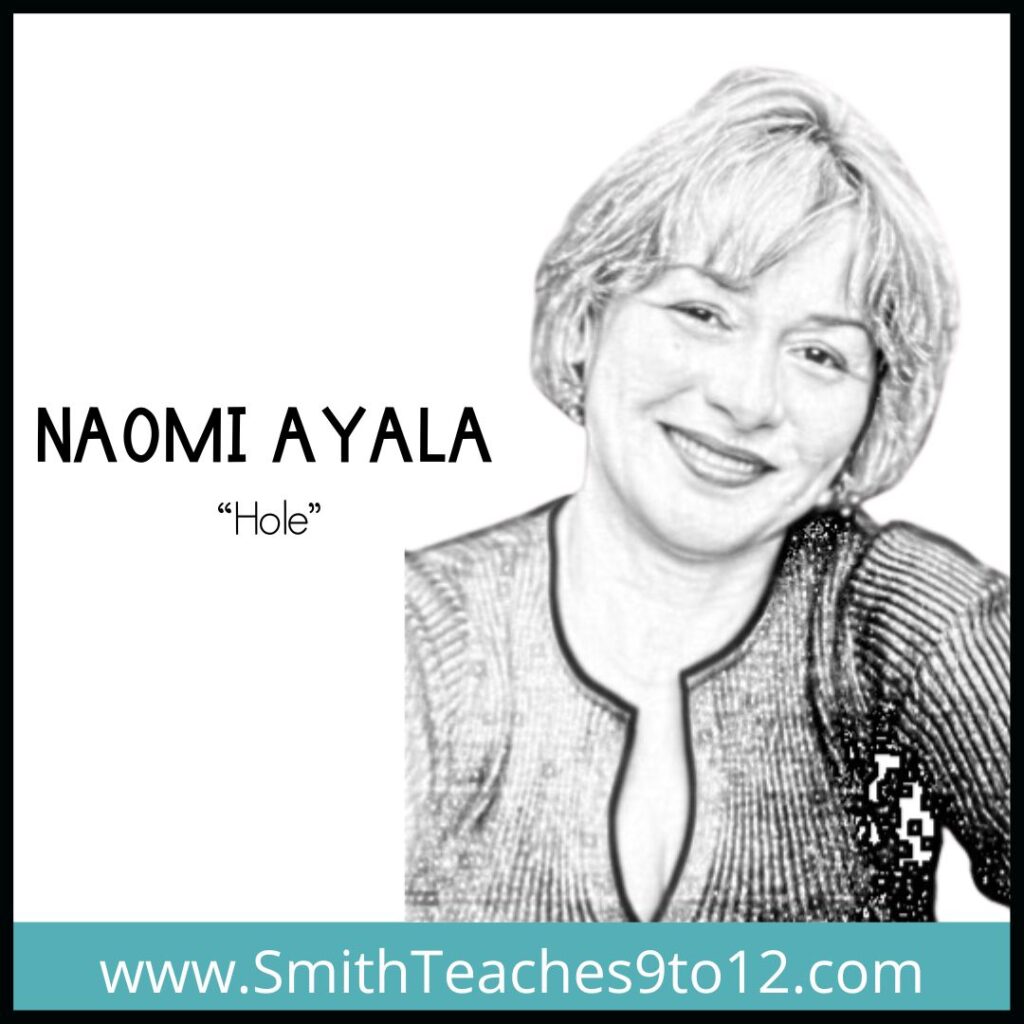
Naomi Ayala
“Hole” seems a mundane poem about construction on a street viewed by the narrator of the poem and then the last line hits you. The turn of that last line brings about new meaning to everything written before it, including the title.
You could use this poem for a lesson to have students practice their inferencing skills. Provide the poem without the title and have students come up with a title along with a justification. This will have them reading the poem closely, parsing lines to figure out deeper meaning, and being critical in their creative thinking to come up with a title. This could be done with nearly any poem so consider using a variety of poems, even including others from this list, to do this activity in class.
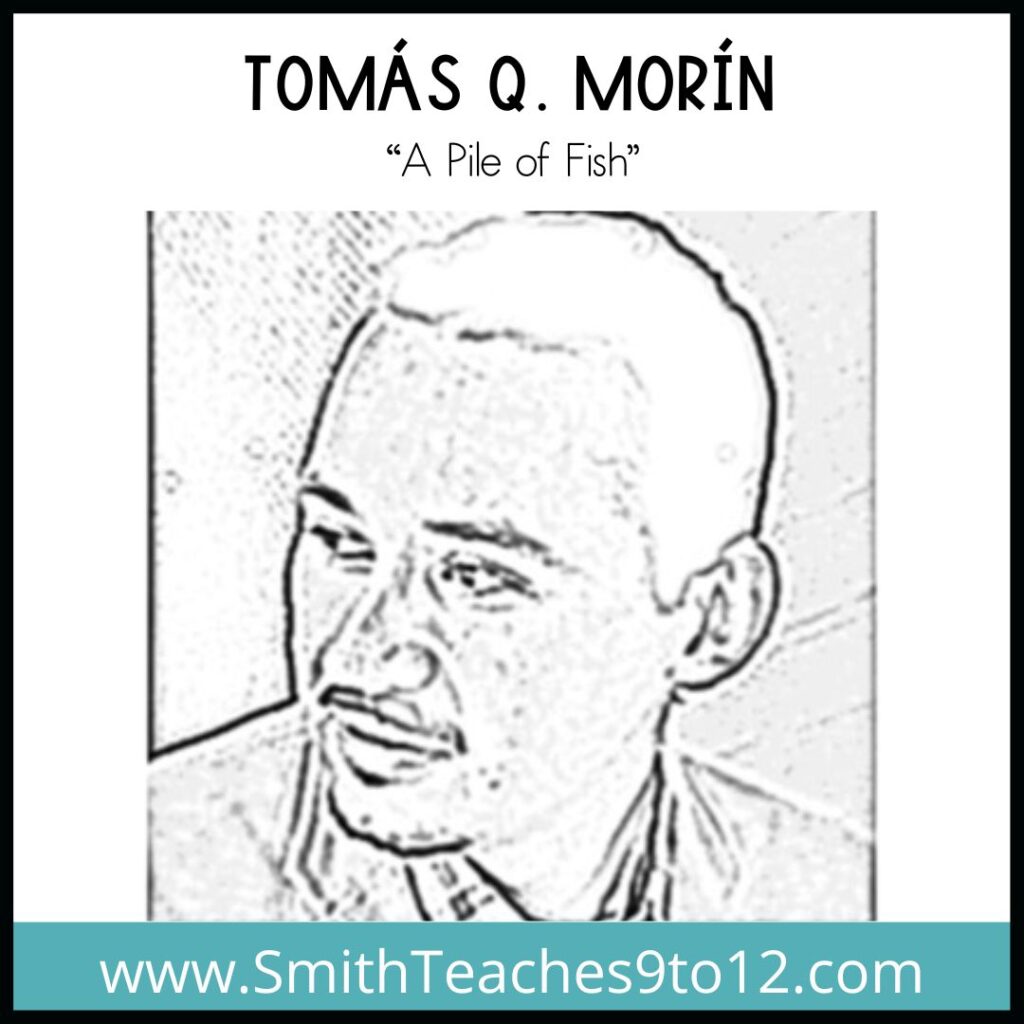
Tomás Q. Morín
“A Pile of Fish” – focusing on a visit to a museum to see Goya’s painting “Still Life with Golden Bream” but it’s about identity and fatherhood all the more. One lesson idea would be to use the painting before reading the poem in order to see students’ reactions to it. What do they think of the title? How do they describe what they see? Then read the poem as a point of comparison.
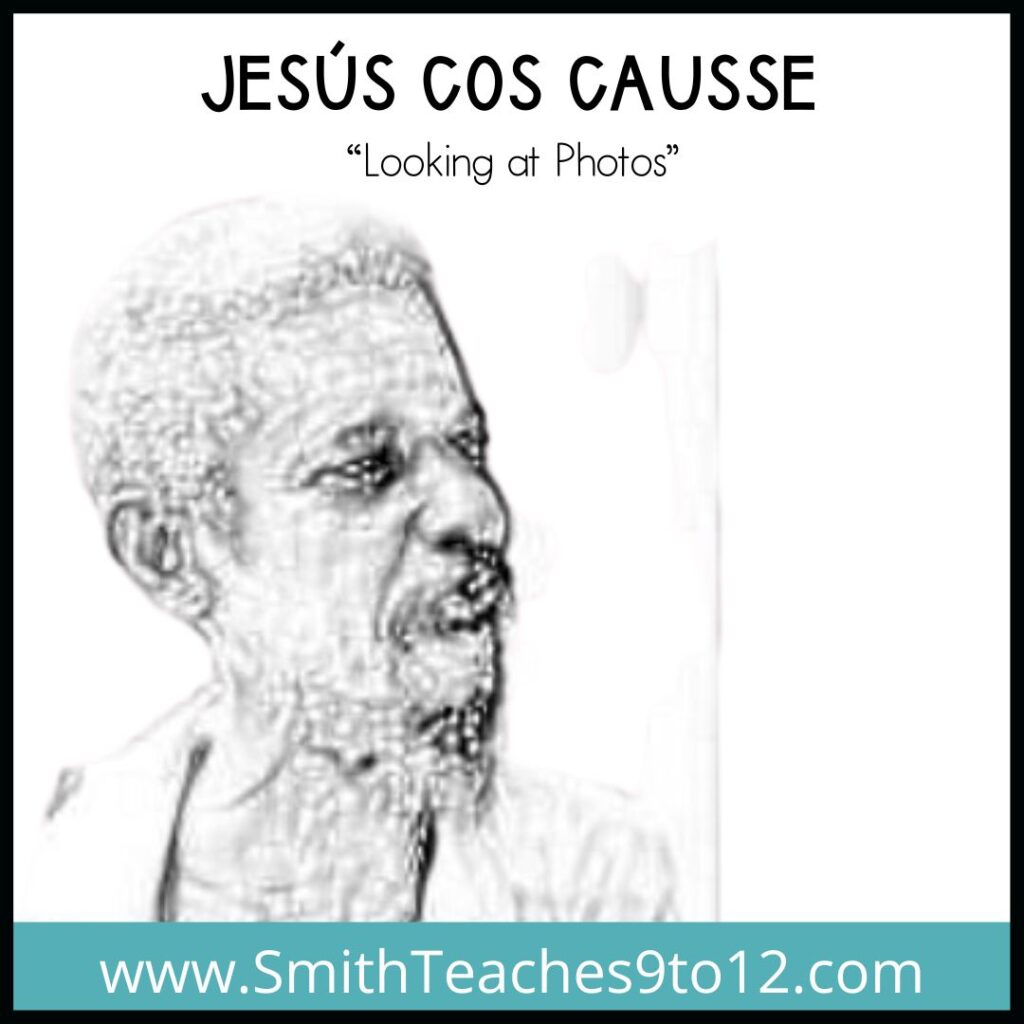
Jesús Cos Causse
“Looking at Photos” is a short poem in Spanish and English that simply describes a photograph of a long-ago memory of him and his family. After studying the poem, students could do the same in an activity all about ekphrasis. Ekphrastic poetry is when someone describes an image in words. Students could poetically describe one of their own photographs. With a focus on descriptive and precise language or avoiding tired or overused words this activity would work as a complement to a writing or essay-focused lesson.
Check out the ready-made activity about Ekphrastic Poetry that you can print or assign digitally.
These 10 contemporary Latinx poets are just a few of the myriad of artists creating written and spoken word poetry at this time. To find more poets check out Teach Living Poets and their vast list of poets that could work in your classroom to ensure you’re including Poetry! All. The. Time!

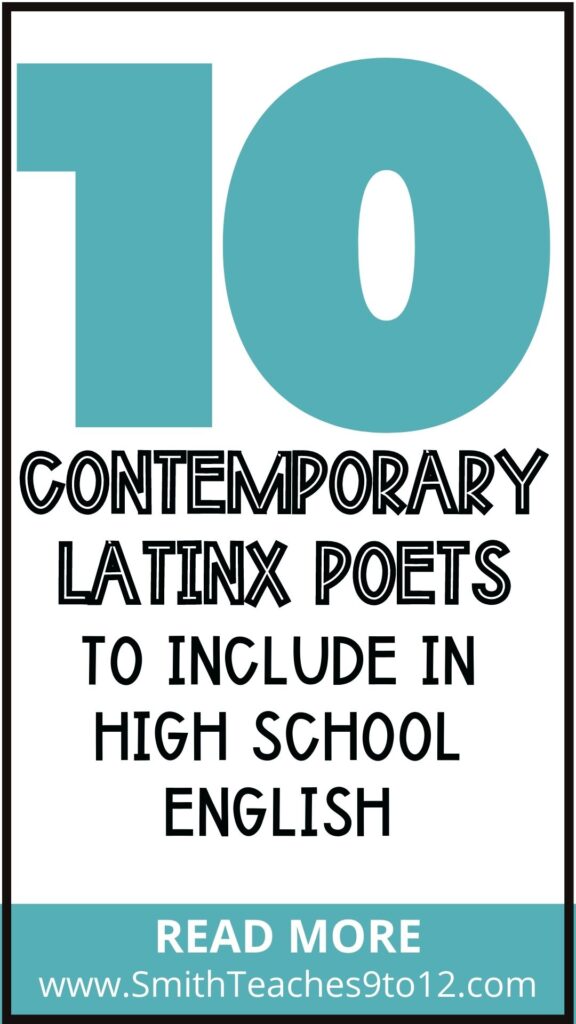
And if you’re looking to include more poetry throughout the year check out the FREE e-book with 5 suggested poems for every month of the year and 8 activities that can work with any poem!
Related articles:
- 12 Poems for AAPI Heritage Month
- 6 Ways to Include Poetry in Your Next Novel Study
- 5 Ways To Celebrate Black Voices In Your ELA Classroom This Year from A Better Way to Teach

